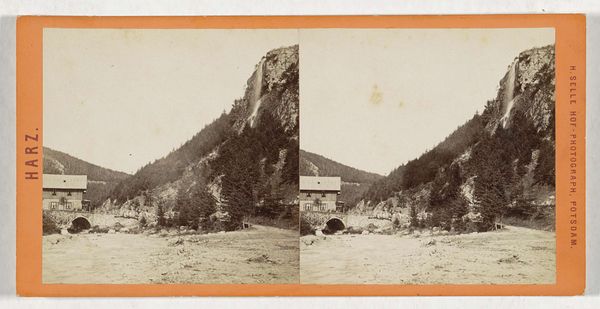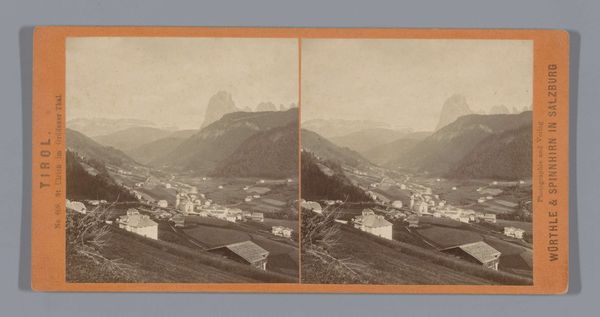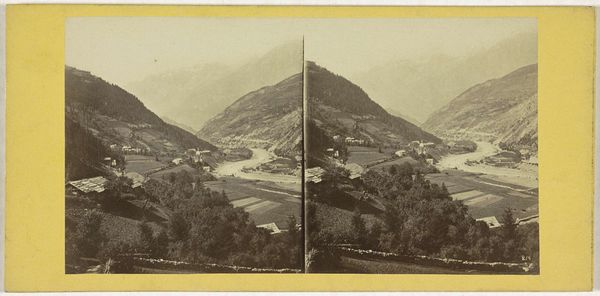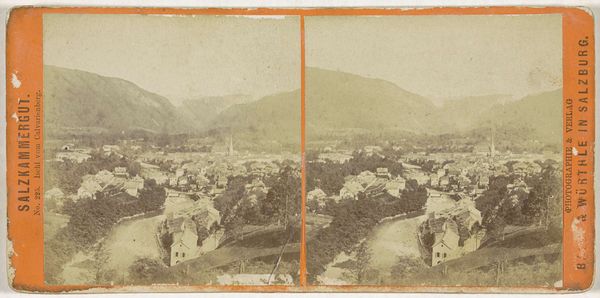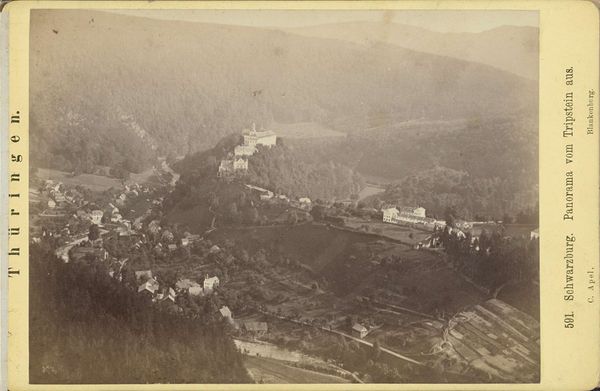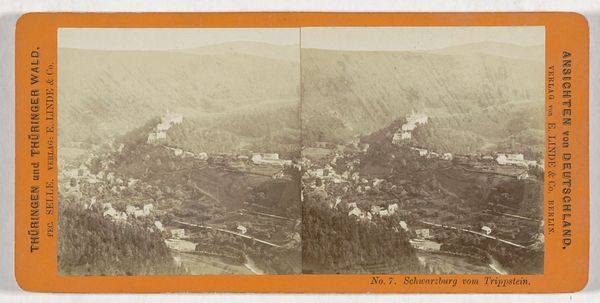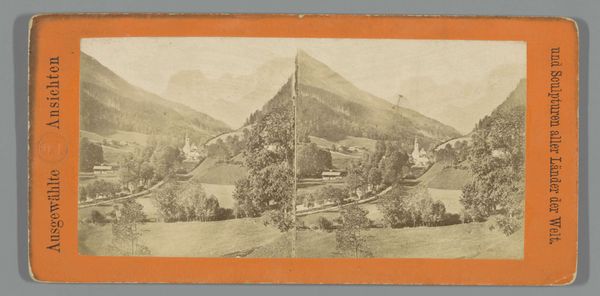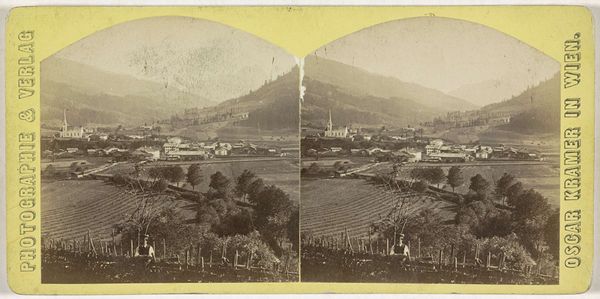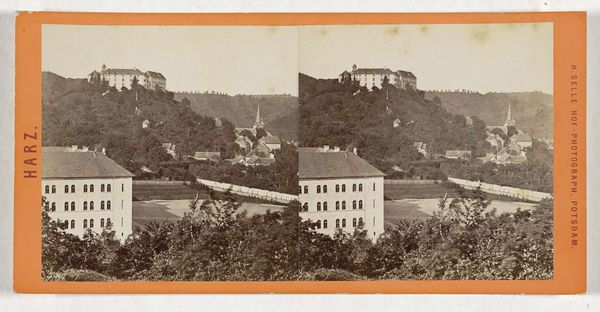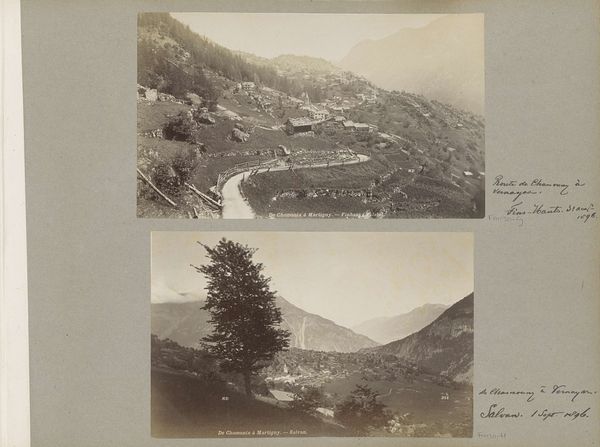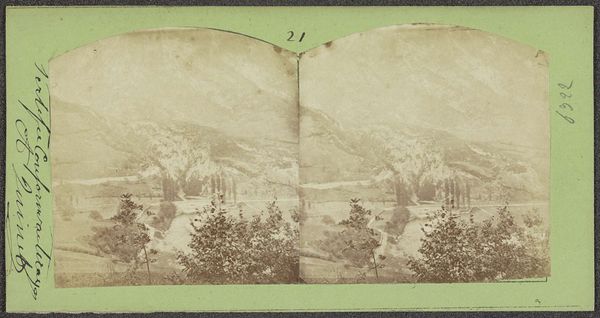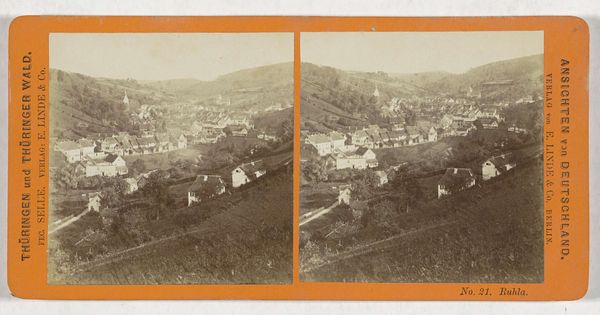
photography
#
landscape
#
photography
#
realism
Dimensions: height 86 mm, width 174 mm
Copyright: Rijks Museum: Open Domain
Editor: This stereoscopic photograph, "Gezicht op Altenahr en Burg Are, Duitsland," was taken between 1852 and 1868 by Carl Heinrich Jacobi. The sepia tones give it a dreamlike quality, and the way the ruined castle looms over the town below feels almost ominous. What do you see in this piece, considering its historical context? Curator: This image, especially viewed through the lens of post-industrial revolution societal shifts, speaks volumes. We see the romanticization of the ruin, a popular motif reflecting a yearning for a pre-industrial past amidst rapid modernization. But it also poses questions about power dynamics: Who benefits from preserving and idealizing these ruins, often tied to feudal systems, while overlooking the lives of those who may have suffered under such regimes? Consider, too, the advent of photography at this time. How does its accessibility democratize image-making or, conversely, reinforce existing social hierarchies by controlling representation and narrative? Editor: That's a great point about whose stories are being told, and by whom. The very act of capturing this idyllic scene with a new technology does seem to suggest control and perhaps a particular agenda. Curator: Exactly. What stories aren’t being told here? Who lived in that village, and what was their relationship to the castle above them? It’s critical to investigate these silences within seemingly benign landscapes. Further, the stereotype cards themselves were popular parlor amusements for the growing middle class. Think about the role of such images in shaping and maintaining cultural narratives and perspectives during a period of tremendous social and technological change. How did these views of Altenahr become associated with larger national, class, or colonial ambitions? Editor: So, it’s about more than just a pretty view – it's about unpacking the layers of meaning embedded within the image, thinking about its impact and the ideologies it reinforces. I'll definitely keep that in mind. Curator: Precisely. Analyzing art within its multifaceted socio-political framework is key to fully understanding its significance.
Comments
No comments
Be the first to comment and join the conversation on the ultimate creative platform.
